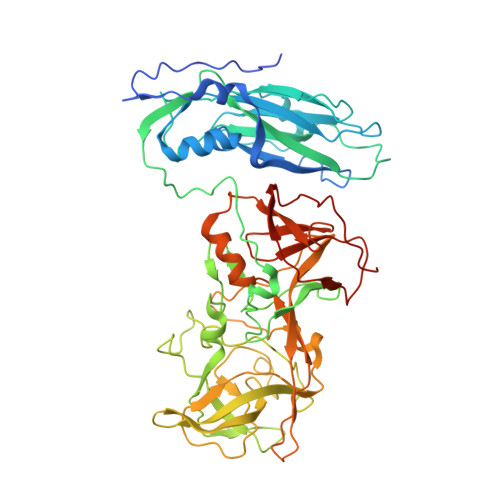The 2.6 angstrom Structure of a Tulane Virus Variant with Minor Mutations Leading to Receptor Change.
Sun, C., Huang, P., Xu, X., Vago, F.S., Li, K., Klose, T., Jiang, X.J., Jiang, W.(2024) Biomolecules 14
- PubMed: 38254719
- DOI: https://doi.org/10.3390/biom14010119
- Primary Citation of Related Structures:
8VGR, 8VJR, 8VJS, 9CVE, 9CVF, 9CVG - PubMed Abstract:
Human noroviruses (HuNoVs) are a major cause of acute gastroenteritis, contributing significantly to annual foodborne illness cases. However, studying these viruses has been challenging due to limitations in tissue culture techniques for over four decades. Tulane virus (TV) has emerged as a crucial surrogate for HuNoVs due to its close resemblance in amino acid composition and the availability of a robust cell culture system. Initially isolated from rhesus macaques in 2008, TV represents a novel Calicivirus belonging to the Recovirus genus. Its significance lies in sharing the same host cell receptor, histo-blood group antigen (HBGA), as HuNoVs. In this study, we introduce, through cryo-electron microscopy (cryo-EM), the structure of a specific TV variant (the 9-6-17 TV) that has notably lost its ability to bind to its receptor, B-type HBGA-a finding confirmed using an enzyme-linked immunosorbent assay (ELISA). These results offer a profound insight into the genetic modifications occurring in TV that are necessary for adaptation to cell culture environments. This research significantly contributes to advancing our understanding of the genetic changes that are pivotal to successful adaptation, shedding light on fundamental aspects of Calicivirus evolution.
Organizational Affiliation:
Department of Biological Sciences, Purdue University, West Lafayette, IN 47907, USA.














